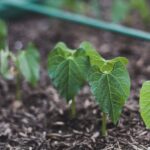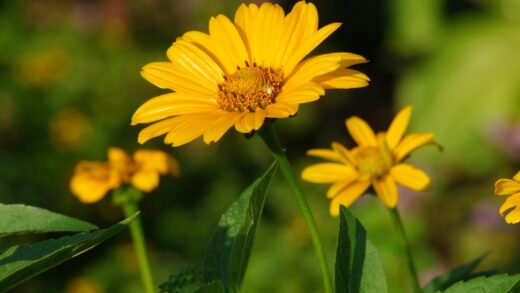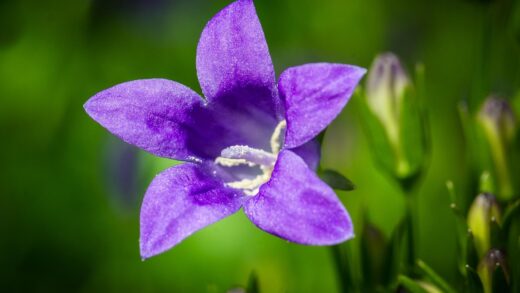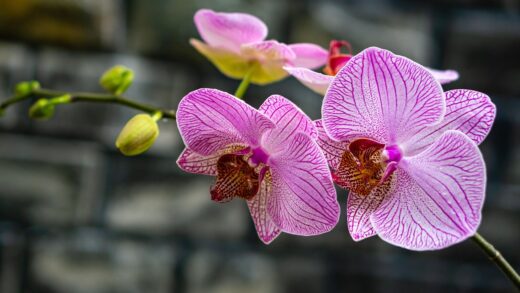Caring for peppermint is a rewarding endeavor for any gardener, offering a continuous supply of aromatic leaves for culinary and therapeutic use. This robust herb, a natural hybrid of watermint and spearmint, is known for its vigorous growth and refreshing scent, making it a popular choice for both novice and experienced horticulturists. Proper care involves understanding its fundamental needs for sunlight, water, and soil, as well as managing its famously aggressive growth habit. By providing the right conditions and regular attention, you can ensure your peppermint plant thrives, producing lush, flavorful foliage throughout the growing season.
Successful cultivation begins with selecting an appropriate location, as this significantly influences the plant’s health and vitality. Peppermint flourishes in a spot that receives morning sun and partial afternoon shade, especially in hotter climates where intense sun can scorch the leaves. The plant is not overly particular about soil type but performs best in a rich, moist, and well-draining medium with a pH between 6.0 and 7.0. Before planting, amending the soil with organic compost or well-rotted manure can provide a nutrient-rich foundation that supports vigorous growth. Good air circulation is also crucial to prevent fungal diseases, so avoid overcrowding plants.
Once established, peppermint requires consistent moisture to produce tender, succulent leaves. The soil should be kept evenly moist but not waterlogged, as standing water can lead to root rot, a common issue with this herb. Regular harvesting is a key aspect of peppermint care, as it encourages the plant to become bushier and more productive. Pinching off the top leaves and stems not only provides you with fresh mint but also stimulates new growth from the nodes below, resulting in a fuller plant. This practice should be done frequently throughout the spring and summer months.
Managing the spread of peppermint is perhaps the most critical aspect of its long-term care, as its runners, or stolons, can quickly take over a garden bed. To prevent this invasive behavior, it is highly recommended to grow peppermint in containers or in a submerged pot within the garden. If planting directly in the ground, installing root barriers at least 12-18 inches deep around the plant can help contain its spread. Regularly trimming the edges of the patch and removing any runners that escape the designated area will also be necessary to keep it in check.
Soil and location requirements
The foundation of a healthy peppermint plant lies in the soil it is grown in and the location it occupies in the garden. Peppermint thrives in loamy soils that are rich in organic matter, which helps to retain the consistent moisture the plant loves. The ideal soil should be well-draining to prevent the roots from becoming waterlogged, a condition that can quickly lead to fungal diseases and root rot. If your garden has heavy clay or very sandy soil, it is essential to amend it generously with compost, peat moss, or other organic materials to improve both its texture and nutrient content.
More articles on this topic
When considering the pH of the soil, peppermint shows a preference for a slightly acidic to neutral range, ideally between 6.0 and 7.0. While it can tolerate slightly more alkaline conditions, growth may be less vigorous. A simple soil test can determine your garden’s pH level, and amendments like lime or sulfur can be used to adjust it accordingly. Ensuring the correct pH allows the plant to efficiently absorb nutrients from the soil, which is crucial for developing the essential oils that give peppermint its characteristic strong aroma and flavor.
The optimal location for peppermint is one that balances sunlight and shade, as this directly impacts the concentration of its essential oils. A spot that receives at least four to six hours of direct morning sunlight is ideal, followed by light or partial shade during the hottest part of the afternoon. This combination protects the delicate leaves from being scorched while providing enough light energy for robust photosynthesis and oil production. In cooler climates, peppermint can tolerate more direct sun, but in warmer regions, afternoon shade is non-negotiable for preventing stress and leaf damage.
In addition to light and soil, consider the physical placement of your peppermint to manage its growth. Because it spreads aggressively through underground runners, planting it in an open garden bed without containment is a common mistake that can lead to it overtaking other plants. A large pot or container is an excellent solution for controlling its spread. Alternatively, you can sink a bottomless container into the garden soil, creating a physical barrier that restricts the runners while allowing the roots to access ground moisture and nutrients.
Regular maintenance tasks
Consistent maintenance is crucial for keeping your peppermint plant healthy, productive, and well-behaved throughout its growing season. One of the most important routine tasks is watering, as peppermint has a relatively high water requirement compared to more drought-tolerant herbs. You should aim to keep the soil consistently moist to the touch, but never saturated. During hot, dry periods, this might mean watering every day, especially for plants in containers which tend to dry out more quickly. A layer of organic mulch, such as straw or shredded bark, can help retain soil moisture and suppress weeds.
More articles on this topic
Another key maintenance activity is regular harvesting, which should be viewed as a form of pruning. Frequently snipping the top sets of leaves encourages the plant to branch out, leading to a much bushier and more compact form rather than a leggy one. This practice not only provides a steady supply of fresh leaves for your kitchen but also prevents the plant from flowering prematurely. Once peppermint begins to produce flowers, its energy shifts from leaf production to seed production, often resulting in a decline in the quality and flavor of the leaves.
Weed control is also an essential part of regular maintenance, especially for peppermint grown in garden beds. Weeds compete with your peppermint for water, nutrients, and sunlight, and a dense patch of weeds can reduce air circulation, creating a favorable environment for pests and diseases. Hand-pulling weeds is often the most effective method, as it avoids disturbing the shallow root system of the mint. Applying a layer of mulch around the base of the plant can significantly reduce weed growth and make any that do appear easier to remove.
Finally, you must be vigilant in managing the plant’s inherent desire to spread. Even when contained, peppermint will try to send out runners over the edge of a pot or past a root barrier. Routinely inspect the area around your plant and promptly trim any escaping stems or runners. Every few years, it is also a good practice to divide the plant, which involves lifting the root ball, separating it into smaller sections, and replanting them. This rejuvenates the plant, prevents it from becoming root-bound in containers, and provides you with new plants to expand your garden or share with others.
Harvesting for optimal flavor
Harvesting peppermint at the right time and in the right way is critical to capturing its peak flavor and aroma. The concentration of essential oils, particularly menthol, in the leaves fluctuates throughout the day and is highest in the morning. Therefore, the best time to harvest is in the morning, just after the dew has evaporated but before the intense heat of the sun begins to dissipate these volatile oils. This timing ensures that the leaves you collect will have the most potent and refreshing flavor for use in teas, dishes, or infusions.
The stage of the plant’s growth also significantly impacts its flavor profile. For the most intense flavor, it is recommended to harvest the leaves just before the plant begins to flower. At this point, the plant has accumulated a high concentration of essential oils in its foliage in preparation for reproduction. You can harvest individual leaves as needed throughout the growing season, but for a larger harvest intended for drying or preserving, timing it before the flowering stage yields the best results. The appearance of flower buds is your cue to begin a major harvest.
When harvesting, use a sharp pair of scissors or pruning shears to make clean cuts. You can snip off individual leaves, but a more beneficial method for the plant is to cut entire stems. Trim the stems back to just above a leaf node, which is the point where a pair of leaves emerges. This technique encourages the plant to send out new shoots from that node, promoting bushier growth and ensuring a continuous supply of fresh leaves. You can harvest up to one-third of the plant at any given time without causing it undue stress.
After harvesting, proper handling is essential to preserve the quality of the leaves. For immediate use, simply rinse the stems under cool water and pat them dry. If you plan to dry the peppermint, gather the stems into small bundles and hang them upside down in a warm, dry, and well-ventilated area away from direct sunlight. Once the leaves are brittle and crumble easily, they are fully dry and can be stored in an airtight container. Proper harvesting and preservation techniques allow you to enjoy the vibrant flavor of your homegrown peppermint all year round.
Managing its invasive nature
One of the most defining characteristics of peppermint, and indeed all mints, is its vigorous and often invasive growth habit. This is due to its method of propagation through underground stems known as rhizomes or stolons, which spread horizontally just below the soil surface and send up new shoots along their length. If left unchecked, a single peppermint plant can quickly colonize a large area of a garden bed, outcompeting less aggressive plants for resources. Understanding and actively managing this tendency is fundamental to successfully incorporating peppermint into your garden landscape without it becoming a nuisance.
The most effective strategy for controlling peppermint’s spread is physical containment. Growing peppermint in pots or other containers is the simplest and most foolproof method. Choose a container that is at least 12 inches in diameter to give the plant adequate room to grow for a season. If you wish to plant it in the ground, consider using a bottomless bucket or a specialized root barrier. This involves sinking the container or barrier into the soil, leaving a lip of about two inches above the ground level to prevent the runners from simply creeping over the top.
Even with containment measures in place, vigilance is still required. Peppermint can be surprisingly resourceful, and runners may eventually find their way over the top of barriers or through drainage holes in pots that are placed on soil. Make it a regular habit to inspect the perimeter of your mint patch or container. Any stems that are attempting to escape should be promptly trimmed back. It is also wise to place container-grown mint on a patio, deck, or a bed of gravel rather than directly on garden soil to further discourage rooting.
Should your peppermint escape its designated area and begin to spread, decisive action is needed to bring it back under control. You will need to dig up the unwanted plants, being careful to remove as much of the underground runner system as possible, as even small fragments of rhizomes can resprout into new plants. This can be a labor-intensive process, which underscores the importance of proactive containment from the very beginning. For established, overgrown patches, you may need to dig out the entire area and replant a smaller section within a secure barrier.
Long-term health and rejuvenation
To ensure the long-term health and productivity of your peppermint plant, periodic rejuvenation is necessary. Over time, a peppermint patch can become overly dense and woody, with the center of the plant dying out, leading to reduced vigor and less flavorful leaves. This is a natural part of the plant’s life cycle, but it can be managed through the practice of division. Dividing the plant every two to three years will invigorate its growth, improve air circulation, and prevent it from exhausting the nutrients in its immediate soil environment.
The best time to divide peppermint is in the spring, just as new growth is emerging. To do this, carefully lift the entire root clump out of the soil or container using a garden fork or spade. Once the clump is exposed, you can use a sharp knife, a spade, or even your hands to separate it into several smaller sections. Ensure that each new section has a healthy portion of roots and several new shoots or buds. This process not only revitalizes the plant but also provides you with new plants to expand your garden or share with others.
When replanting the divisions, take the opportunity to refresh the soil. If the peppermint was in a container, replace the old potting mix with a fresh, high-quality mix amended with compost. If it was in a garden bed, work a generous amount of compost or other organic matter into the soil before replanting the divisions. This replenishes the nutrients that the vigorous mint has depleted and improves the soil structure, ensuring the newly divided plants have an excellent start. Space the new divisions at least 18 inches apart to allow them room to grow.
Beyond division, maintaining long-term health involves continuing the good care practices of consistent watering, regular harvesting, and diligent management of its spread. In colder climates, providing winter protection in the form of a thick layer of mulch can help the roots survive harsh temperatures and bounce back vigorously in the spring. By treating your peppermint not as a plant to be simply left alone, but as one that requires ongoing attention and periodic renewal, you can enjoy its aromatic presence in your garden for many years to come.

















